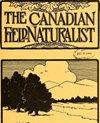Observations of Grizzly Bear (Ursus arctos) associated with abundance of spawning Kokanee (Oncorhynchus nerka) at an inland river, British Columbia, Canada
Q4 Agricultural and Biological Sciences
引用次数: 0
Abstract
Salmon (Oncorhynchus spp.) are an important food source for Grizzly Bear (Ursus arctos), but many salmon populations are declining. While most research on Grizzly Bear–salmon interactions occurs in coastal ecosystems, declining salmon may also affect Grizzly Bears in inland ecosystems where salmon are also an important part of their diet. We document changes in the number and distribution of observations of Grizzly Bears and changing Kokanee (i.e., landlocked Sockeye Salmon, Oncorhynchus nerka) abundance at an inland river. We hypothesized that reduced abundance of Kokanee would limit the number of Grizzly Bear observations at the river. We compared Kokanee abundance and Grizzly Bear observations (n = 535) between 2012 and 2019 at the Lardeau River, British Columbia, Canada. We used a generalized linear mixed model to test if the number of bear observations changed as a function of Kokanee abundance among four river reaches during eight consecutive years of study. Kokanee abundance was a strong statistical predictor of Grizzly Bear observations (β = 0.52, P = 0.001, CI = 0.12–0.87), and Kokanee abundance and reach explained 73% of the variance. Our results suggest that reduced Kokanee abundance also reduces Grizzly Bear presence, likely because bears seek out other, more available food sources, away from Kokanee spawning habitat. This pattern could limit ecosystem services provided by Grizzly Bears adjacent to spawning areas and it could have implications for bear management and conservation.在加拿大不列颠哥伦比亚省的一条内陆河上,观察到与大量产卵的科卡尼(Oncorhynchus nerka)有关的灰熊(Ursus arctos)
鲑鱼(Oncorhynchus spp.)是灰熊(Ursus arctos)的重要食物来源,但许多鲑鱼的数量正在下降。虽然大多数关于灰熊与鲑鱼相互作用的研究都发生在沿海生态系统中,但鲑鱼数量的减少也可能影响内陆生态系统中的灰熊,因为鲑鱼也是它们的重要食物。我们记录了灰熊观测数量和分布的变化,以及内陆河流Kokanee(即内陆红鲑,Oncorhynchus nerka)丰度的变化。我们假设,科卡尼数量的减少会限制在河上观察到灰熊的数量。我们比较了2012年至2019年在加拿大不列颠哥伦比亚省拉多河的科卡尼丰度和灰熊观测值(n = 535)。在连续8年的研究中,我们使用了一个广义线性混合模型来检验熊的观测数量是否作为Kokanee丰度的函数而变化。Kokanee丰度是灰熊观测值的强统计预测因子(β = 0.52, P = 0.001, CI = 0.12-0.87), Kokanee丰度和到达解释了73%的方差。我们的研究结果表明,科卡尼数量的减少也减少了灰熊的存在,可能是因为熊会寻找其他更容易获得的食物来源,远离科卡尼的产卵栖息地。这种模式可能会限制灰熊在产卵区附近提供的生态系统服务,并可能对熊的管理和保护产生影响。
本文章由计算机程序翻译,如有差异,请以英文原文为准。
求助全文
约1分钟内获得全文
求助全文
来源期刊

The Canadian Field-Naturalist
Agricultural and Biological Sciences-Ecology, Evolution, Behavior and Systematics
CiteScore
0.60
自引率
0.00%
发文量
54
期刊介绍:
The Canadian Field-Naturalist (ISSN: 0008-3550) publishes scientific papers by amateur and professional naturalists and field biologists, reporting observations and results of investigations in any field of natural history, provided they are original, significant, and relevant to Canada.
 求助内容:
求助内容: 应助结果提醒方式:
应助结果提醒方式:


